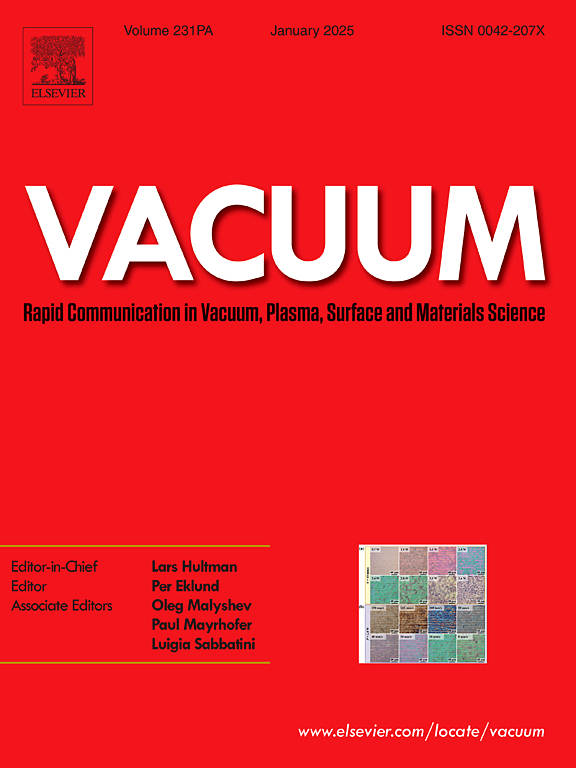Nanocubic transition metal sulfides (FeMn)S2@NC synthesized by MOFs facily for supercapacitors
IF 3.8
2区 材料科学
Q2 MATERIALS SCIENCE, MULTIDISCIPLINARY
引用次数: 0
Abstract
Transition metal sulfides have attracted considerable attention as supercapacitor materials due to their favorable electrochemical properties and low cost. However, challenges such as slow electrochemical kinetics and significant volume changes still persist. In this study, (FeMn)S2@NC nanocubes were synthesized by utilizing MOFs as precursors, employing a solution method to encapsulate Ppy around the periphery, followed by a one-step annealing process. The electrode prepared from (FeMn)S2@NC exhibits a high specific capacitance of 1154 F/g at 1 A/g and retains a specific capacitance of 777 F/g even at a high current density of 5 A/g. After 8000 charge-discharge cycles at 10 A/g, it still maintains a high capacity retention of 94 % and close to 100 % Coulombic efficiency. The (FeMn)S2@NC//AC capacitor exhibite excellent electrochemical performance with good rate capability and practical value 39.73F/g at 1A/g, 38.26F/g at 2A/g, 26.67F/g at 5A/g, 20.53F/g at 7A/g and 14F/g at 10A/g. Electrochemical testing at 5A/g show 93.3 % high capacity retention after 180,000 cycles.
用 MOFs 法合成纳米立方过渡金属硫化物 (FeMn)S2@NC 用于超级电容器
作为超级电容器材料,过渡金属硫化物因其良好的电化学特性和低成本而备受关注。然而,缓慢的电化学动力学和显著的体积变化等挑战依然存在。本研究利用 MOFs 作为前驱体,采用溶液法在外围包覆 Ppy,然后一步退火工艺合成了 (FeMn)S2@NC 纳米立方体。用(FeMn)S2@NC 制备的电极在 1 A/g 时显示出 1154 F/g 的高比电容,即使在 5 A/g 的高电流密度下也能保持 777 F/g 的比电容。在 10 A/g 的条件下,经过 8000 次充放电循环后,它仍能保持 94 % 的高容量保持率和接近 100 % 的库仑效率。(FeMn)S2@NC//AC电容器具有优异的电化学性能和良好的速率能力,实际值为1A/g时39.73F/g,2A/g时38.26F/g,5A/g时26.67F/g,7A/g时20.53F/g,10A/g时14F/g。5A/g 下的电化学测试表明,在 180,000 次循环后,高容量保持率为 93.3%。
本文章由计算机程序翻译,如有差异,请以英文原文为准。
求助全文
约1分钟内获得全文
求助全文
来源期刊

Vacuum
工程技术-材料科学:综合
CiteScore
6.80
自引率
17.50%
发文量
0
审稿时长
34 days
期刊介绍:
Vacuum is an international rapid publications journal with a focus on short communication. All papers are peer-reviewed, with the review process for short communication geared towards very fast turnaround times. The journal also published full research papers, thematic issues and selected papers from leading conferences.
A report in Vacuum should represent a major advance in an area that involves a controlled environment at pressures of one atmosphere or below.
The scope of the journal includes:
1. Vacuum; original developments in vacuum pumping and instrumentation, vacuum measurement, vacuum gas dynamics, gas-surface interactions, surface treatment for UHV applications and low outgassing, vacuum melting, sintering, and vacuum metrology. Technology and solutions for large-scale facilities (e.g., particle accelerators and fusion devices). New instrumentation ( e.g., detectors and electron microscopes).
2. Plasma science; advances in PVD, CVD, plasma-assisted CVD, ion sources, deposition processes and analysis.
3. Surface science; surface engineering, surface chemistry, surface analysis, crystal growth, ion-surface interactions and etching, nanometer-scale processing, surface modification.
4. Materials science; novel functional or structural materials. Metals, ceramics, and polymers. Experiments, simulations, and modelling for understanding structure-property relationships. Thin films and coatings. Nanostructures and ion implantation.
 求助内容:
求助内容: 应助结果提醒方式:
应助结果提醒方式:


